Soloist: Margaret Valentine Le Long's Bicycling Legacy
The barbed wire gate and barrel hoop leaped into view midway down the Wyoming hill. Margaret Valentine Le Long swerved her bicycle, only to meet with a badger hole.
The world blurred into a kaleidoscope of blues, greens, and browns as she plummeted down the sharp incline. She landed in a jumble, her green bicycle resting nearby, while her hat and veil settled on the gate.
“I carefully wiggled around and found no bones were broken, then I sat up and began to cry,” Le Long wrote of her 1897 solo bicycle tour from Chicago to San Francisco. “Then I laughed, but the laugh had a hysterical sound and I quit. There is no use having hysterics all alone.”
Despite Le Long’s daring, little is known about her beyond the basics: a white woman, who was probably in her twenties when she began her journey. Her solo tour has been buried by time with only a few mentions in history-of-bicycling timelines. Le Long’s is a story of bravery and ingenuity.
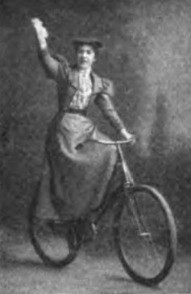
Luckily, she reported her travels for the 1898 February/March issues of Outing, a late 19th/early 20th century outdoor magazine. Nowhere in her account does Le Long explain her motivation for the trip, although in 1897, the Detroit Free Press wrote, “She made the journey … for the sake of the adventure and experience.”
Le Long’s adventure began on a May morning when she straddled her drop-frame safety bicycle and left Chicago, where she was visiting friends and family, for the 2,000-mile pedal to her hometown of San Francisco. Everyone she knew opposed her. They predicted a litany of tragedies from broken bones to starvation to kidnapping.
But Le Long ignored their protests and carried on with her packing, which included “a suitable skirt, a change of underwear, a few toilet articles, and a clean hanky strapped on my handle bars.” She added heavy soles to her knee-high leather boots and placed a borrowed pistol in her tool bag. With these few essentials, she waved goodbye to her naysayers.
Gender, Race, and Bicycles
Around the same time, other women were also making headlines in the bicycling world. "I think [the bicycle] has done more to emancipate women than any one thing in the world,” social reform trailblazer Susan B. Anthony wrote in 1896. “I rejoice every time I see a woman ride by on a bike.”
While Anthony faced more discouraging voices, her contemporary Kittie Knox had to crash through far more restrictions to enjoy the new sport. The daughter of a white mother and Black father, Kittie found fame as a bicycle racer in the early 1890s and was the first Black person to become a member of the League of American Wheelmen in 1894.
The bicycle not only gave women freedom in transportation, competition, and exercise, but also provided an escape from the restrictive feminine clothing of the day. “If women ride, they must dress more rationally,” Frances Willard, a leading suffragist, wrote in 1895. “If they do this many prejudices as to what they may be allowed to wear will melt away.”
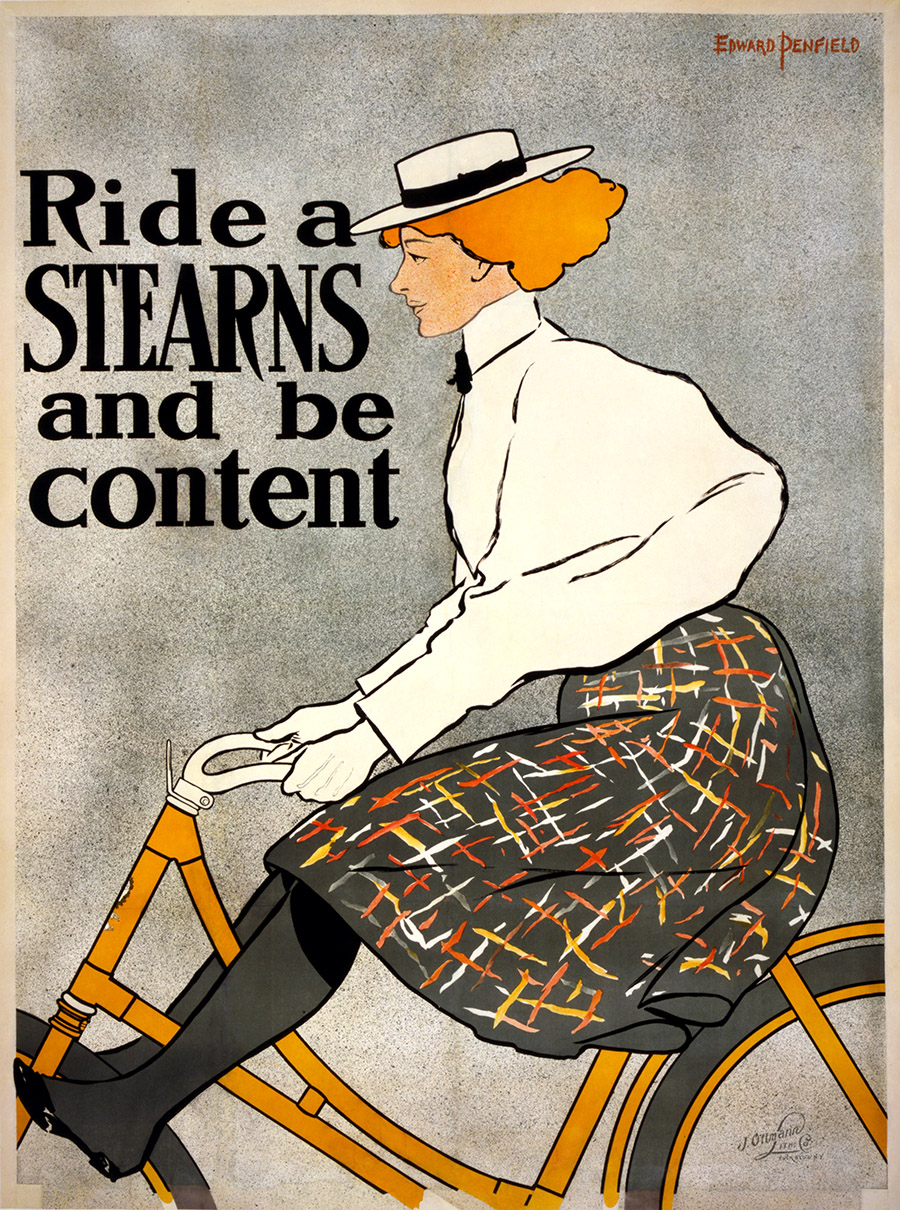
Although Le Long would have been aware of the new cycling attire, such as bloomers, she still chose to ride in skirts. “I … never found the time or place to doff my skirts and appear in bloomers,” she said. “I was always treated with kindness and courtesy, and I attribute a great deal of it to my skirts.”
Challenges of the 1890s
Regardless of her motives and dress, she encountered an endless supply of generosity from strangers, which she often relied on for food, water, and shelter. While in Nebraska, a hungry and tired Le Long came across a barefoot old woman in front of a ramshackle sod house.
Despite the woman’s poverty, she offered Le Long a jug brimming with milk and a loaf of brown bread. “It was only after much pantomimic argument that I induced her to take any payment,” she wrote. “And the quarter she finally accepted hardly eased my conscience when I remembered the bread and milk I had put out of sight.”
But people were not always friendly. In Bryan, Wyoming, doors were literally slammed in her face. “It is enough to make any one mean to live in that country. Of all the God-forsaken countries I ever saw, that is the worst,” she noted. “Even the sagebrush refuses to grow.”
Some of her experiences will resonate with today’s cyclists, giving Le Long’s tour a sense of timelessness. Wind, for example, became her nemesis in Illinois: “It blows all day, and it blows all night, and it always blows straight in your face.”
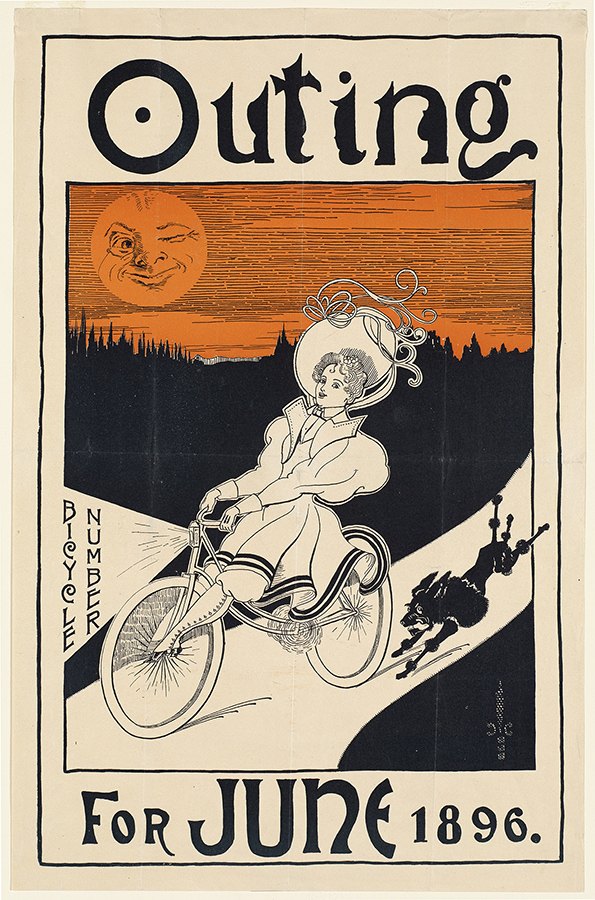
Yet, like all bicycle tours, challenging weather and road conditions gave way to moments of awe. “If you can forget your grievances against the roads long enough to stop and admire, the scenery is beautiful beyond description.”
Le Long contended with roads of such poor maintenance that they could would not be labeled as roads by modern standards. She mistakenly took “Happy Jack Road” (today’s WY 210) as a shortcut. “Up and down, in and out, over rocks and through sand runs the Happy Jack Road,” she said. “And at every mile your breath comes harder and your knees grow weaker.”
Even though the roads were appalling, it was the potential for aggressive vagrants or “tramps” that created her greatest anxiety. “They sometimes displayed an interest in my affairs that was unpleasant, but as I was a sort of a tramp myself, I couldn’t put on too many airs.”
But it wasn’t a human threat that finally forced Le Long to pull the borrowed pistol from her tool bag. When a herd of cattle crowded her in a threatening manner, she discovered that a few shots caused the cattle to disperse.
Her morale soared as she drew closer to home in early July. “When I finally crossed the state line and stepped once more on California soil, I wept a little weep of joy.” The roads improved and the water tasted, “like wine after the alkali of the desert.”
In the end, she was glad to have made the trip, “though I don’t want to make it again — at least not till a season has passed.” If she ever repeated her cross-country tour, no one knows. Years passed and Le Long vanished from the public eye, seeming to disappear altogether.
But because of advocates like Le Long, Knox, Willard, and Anthony, women pushed forward, embracing bicycling. Today, women have cycled alone in every continent, some spending years exploring the world by bike.
Today's Solo Cyclists
Although Le Long’s story is little known, women solo-bicyclists, like Allison Seger and Molly Eimers, are perfect embodiments of Le Long’s spirit. All three share an innate desire to explore and stretch one’s abilities, disregarding discomfort and challenges and certainly not seeking fame or fortune.
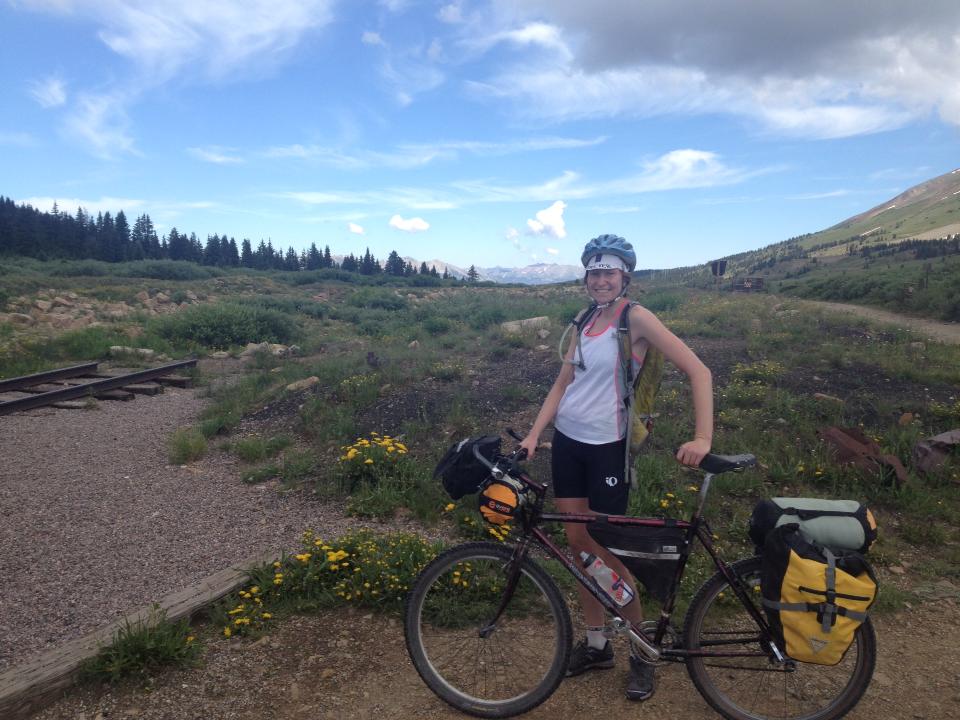
“I think bike travel can be really transformative,” said Seger, an Academic Coach and Adventure Cycling tour leader, who tackled the mostly-dirt 3,000-mile Great Divide Mountain Bike Route alone in 2013. “I’ve never had an experience that is both so humbling and a part of something larger, but also empowering and making you feel really proud.”
“Regardless of why you are traveling solo, you have time with yourself, which is incredibly rewarding,” added Eimers, who solo-biked New Zealand’s 1,800-mile Tour Aotearoa in 2018. “In this busy world that doesn’t happen very often.”
Like Le Long, most solo female bicyclists have met with remarkable kindness and hospitality . “You make friends as you go,” Seger said. “People were so kind … They would invite me to stay with them.”
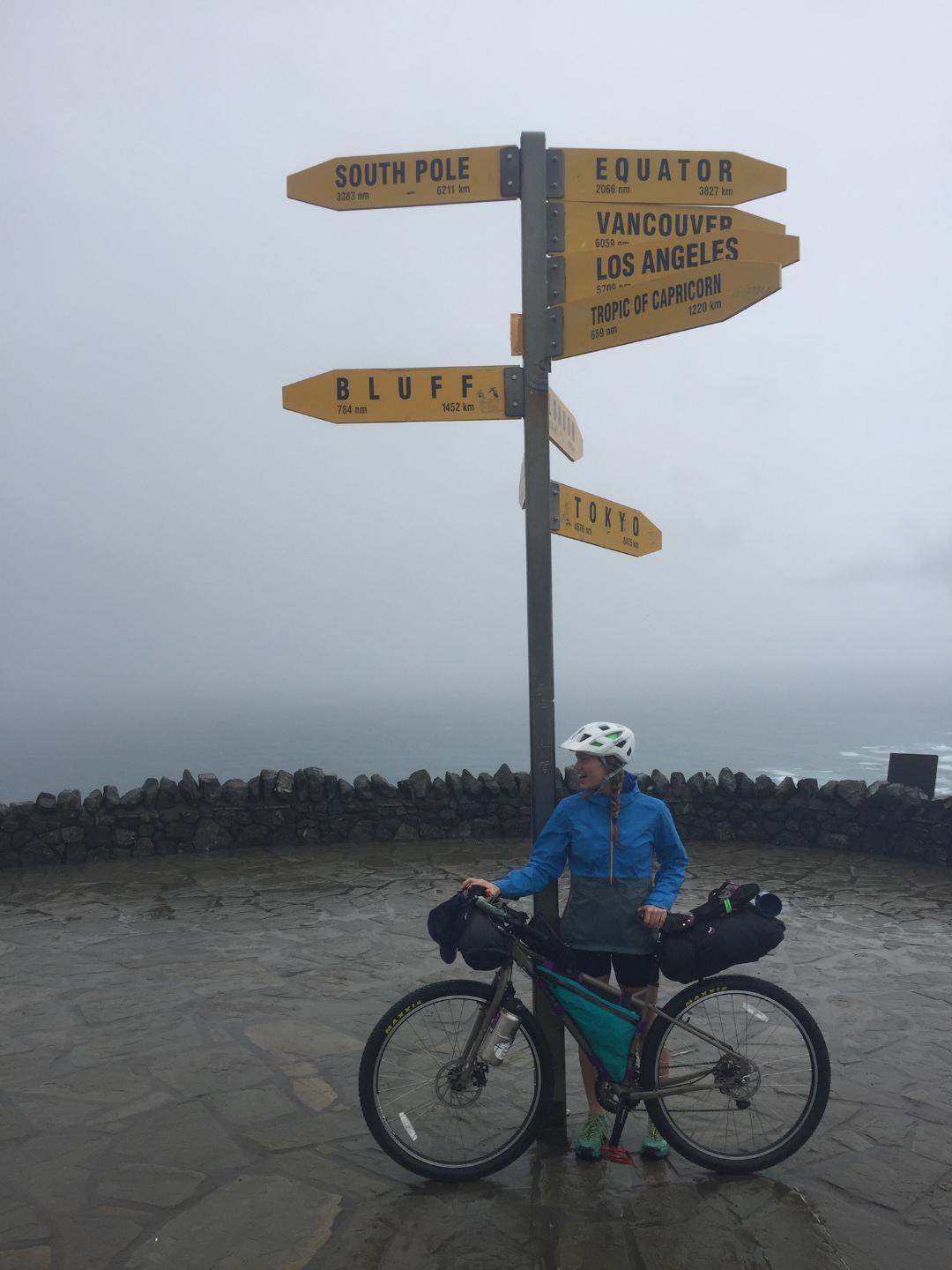
Eimers continued, saying that people were excited to exchange stories. “The amount that people were willing to share really struck me. It’s a hard thing to replicate in your day-to-day life.”
From motivations to the actual pedaling, there is an ageless quality to bike touring, and among Eimers’ and Seger’s stories, some of their most memorable anecdotes could have just as easily happened to Le Long.
Toward the end of Seger’s tour, on a portion of trail that was two mountain -passes and three days from the next town, she came upon a mountain lion on top of a fresh kill. Night surrounded her, making it too dark to decamp, and she spent a sleepless night in her tent. The next day, wanting to put as much distance as possible between herself and the cat, she pushed through mud and rain, cycling into the night.
“One of the things about being alone is that everything seems scarier,” she said. “There’s no one to share it with, to confirm: is that really what we saw?”
On her final day of cycling in New Zealand, Eimers met with a challenge that Le Long would have appreciated: snow, rain, and still hundred miles to go. “I was resolute that I would make it,” she said. “It was so windy and didn’t stop snowing and raining the whole time.”
When she arrived in Bluff, the official end of the Tour Aotearoa, even the weather celebrated with clear skies. “I was so tired,” she said. “I think I kind of laughed a little.”
A bond stretches across the years, connecting Le Long’s 1897 journey with the solo-cyclists of today, proving that courage and the desire to push against boundaries knows no age. “You are capable of a surprising amount,” Eimers said. “Trust yourself.”


Comments
Kittie Knox was not a black woman, she was bi-racial. Please remember that in future articles. Thanks, Ron
Such spirit! She makes no mention of a tent. I wounder if she stayed with local residents wherever she went? Even in 1988 on the Transamerica, I was surprised that rural folk sought us out and asked if we would stay as their guest, at least once a week. Another cyclist, a solo woman, young and attractive as Ms. Le Long, got such offers every day. I can only imagine this was standard practice in the days before warmshowers.
Fantastic article! To think that first American cars were produced about the same time and Ford started production in 1903 ... I can only imagine the scarcity and condition of roads at the time!
They were probably wagon paths and all dirt roads!
Thanks for sharing such an amazing article, really informative.
Forgot Password?
Enter your email address and we'll send you an email that will allow you to reset it. If you no longer have access to the email address call our memberships department at (800) 755-2453 or email us at memberships@adventurecycling.org.
Not Registered? Create Account Now.